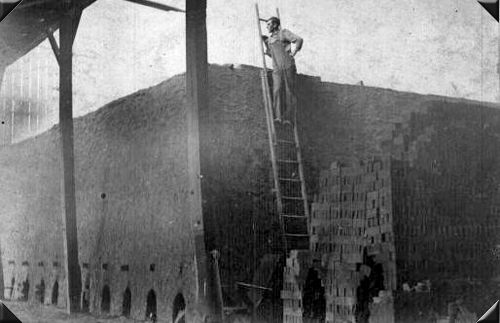Another cold day in Northwest Connecticut. Six a.m. and I have so many things to do around this old house and only 2 months to do them all. It rained again yesterday, today is only 60 degrees and damp, and tomorrow it's supposed to rain!
So why not go for a walk. My goal is to look for snapping turtles in the retention pond behind Stop and Shop. When I was young and living in this same place, I could walk for miles through woods and back roads and always find interesting things to take my mind off the rain and lack of accomplishments. But now, 50 years later into the 21st century our landscapes have changed.
Now, my fantasy about walking in my woods, has come down from 15 acres my grampa owned here plus the neighbors woods, to one half on my Gods little acre we have left. Grampa sold his 14 and there are now 1/4 and 1/2 acre lots with new homes and more cul-de-sacs. The Walmart 1/4 mile away has created more traffic. Chemlawn and garbage have polluted the brook we once owned.
Going for a walk here is not as pleasant as it used to be. I must say that many of my neighbors have lovely gardens and flowers and I sometimes go out of my way to walk by certain interesting and beautiful plantings. But a walk in the woods and there is always distractions, odd shaped trees, mossy rocks, chipmunks, an odd butternut when there are no butternut trees to be seen. A perfectly round 2 inch hole, too big for a snake, too small for a groundhog. I can't imagine why some neighbors spray Chemlawn and never even look at their grass!
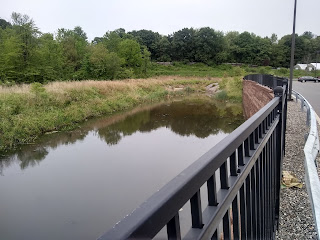 |
| Snapper Pond |
Sure enough, I find two snappers in the pond! In the muddy, litter screwn water, a snapper rises to the surface for air, bobs a minute or two and then dives again. In spite of the parking lot runoff, litter, shopping carts, oil cans and Styrofoam thrown over the fence into the pond, these snappers survive. It is hard to tell what else is in the murky water. I have occasionally seen ducks before they escape or are dragged under by the snappers. I know there are beavers just above the pond in the cattail swamp.

In the beginning, my area on this planet, was probably hunting ground for local small tribes of people. I have found an arrow head in my garden, but there is no large stream nearby that would have been used for food and travel. Our local river, now called the Naugatuck, runs from our downtown Torrington to Long Island Sound. Here in the Shawngum Valley, the river was so large in the early days to be used to float logs down to the shore to be loaded on ships. I assume here is where the native Americans would settle and travel and then hunt in our high, land hill two miles up from the river.
In our earliest written history of the little village of Torringford, there is a short account of our natives on this hill. In 1944, a neighbor and descendent of one of our first white settlers, Elizabeth Gaylord, wrote that there was a wigwam of friendly Indians just a short distance from the site of Edson Davis' fruit house. The house is gone along with the Griswold tavern, and there is the Apple House, a gas station/convience store/Dunkin Donuts of the common type every where across our country. Somewhere I read that the tavern owner was somewhat annoyed by this wigwam and those who dwelt there, being so close to his tavern and perhaps on "his" property.
Here is where we come back to my story. The wigwam on this corner, was here near this small branch of the Leadmine brook that today feeds the Beaver Swamp and the Snapper Pond. New names I have given to the landmarks in my area.
Our first map of Torringford
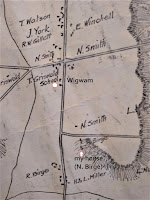
in 1852 when my house was
about 32 years old,
shows the Leadmine Brook.
The course of the brook has shifted.


Google Earth shows the area in 1991 and how it looks today.
And so I linger and watch the lone snapper rise and fall a few times and then wander back home. The development of the area has brought more cars, more people, more "scars upon our land".
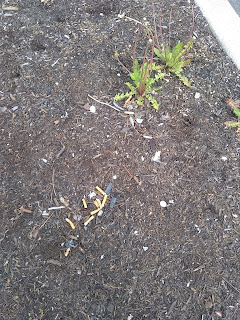
Cigarette butts abound along the road as I walk home.
Plastic bags, car bolts, bottle tops, shot bottles and other odd articles that have accidentally fallen out of passing cars.
And then I spot a lottery ticket.
Perhaps this will be the ticket that will change my fortune.
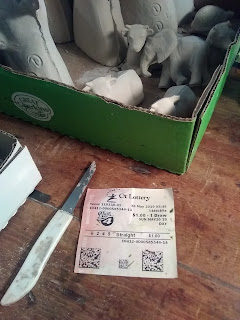
But no, easy to look up on line, easy to sing a round of Que Sera Sera in tribute to Doris Day who recently passed over.
Time to get back to trimming my clay castings for another summer of fairs. Time to get back to real life.



